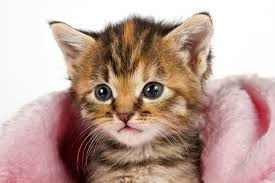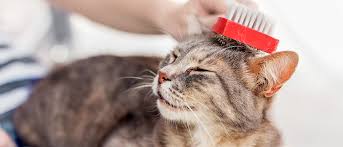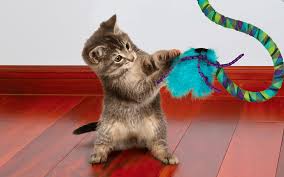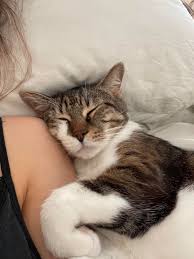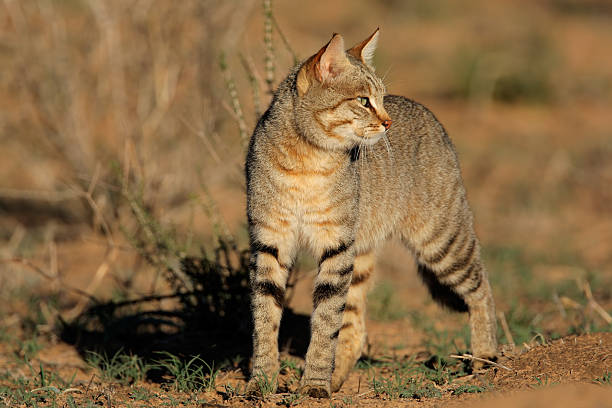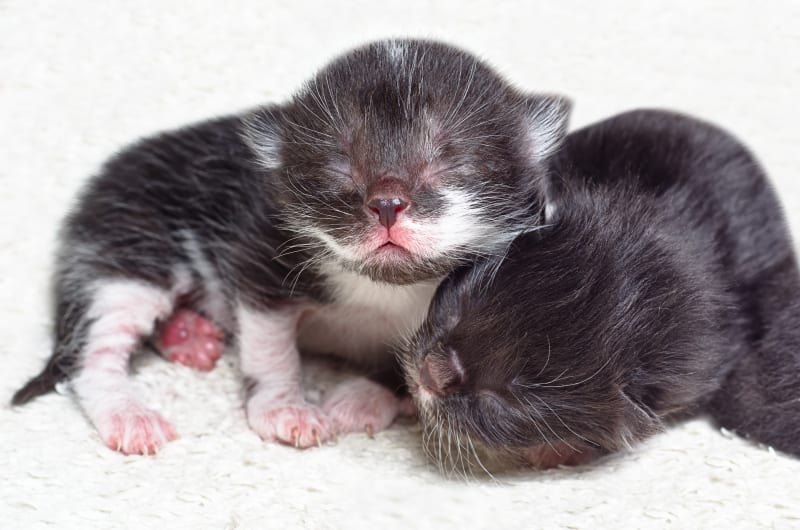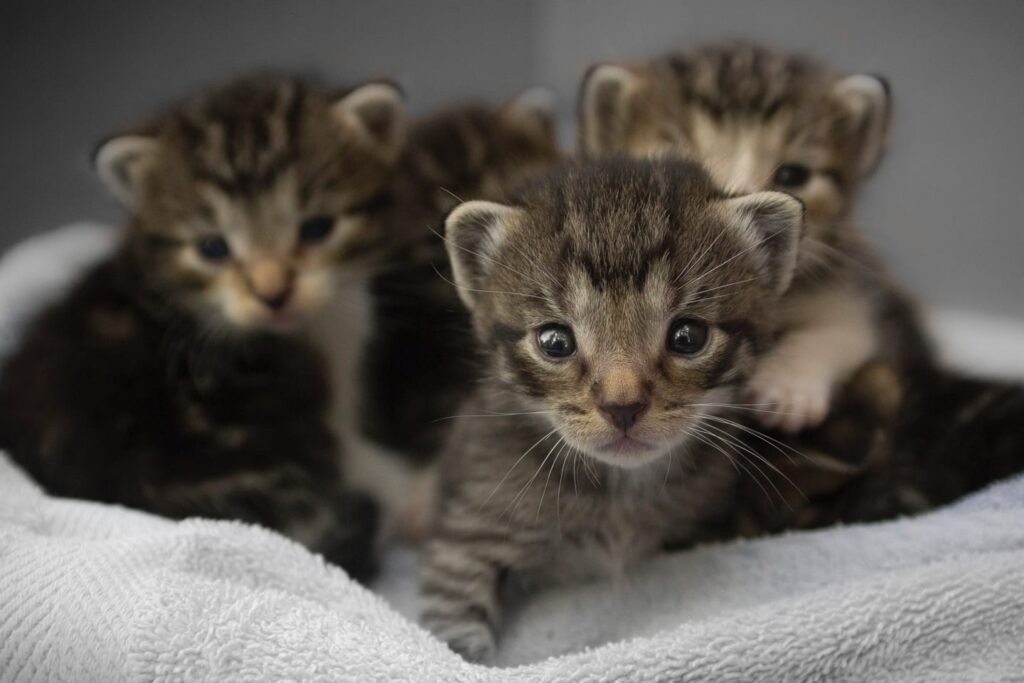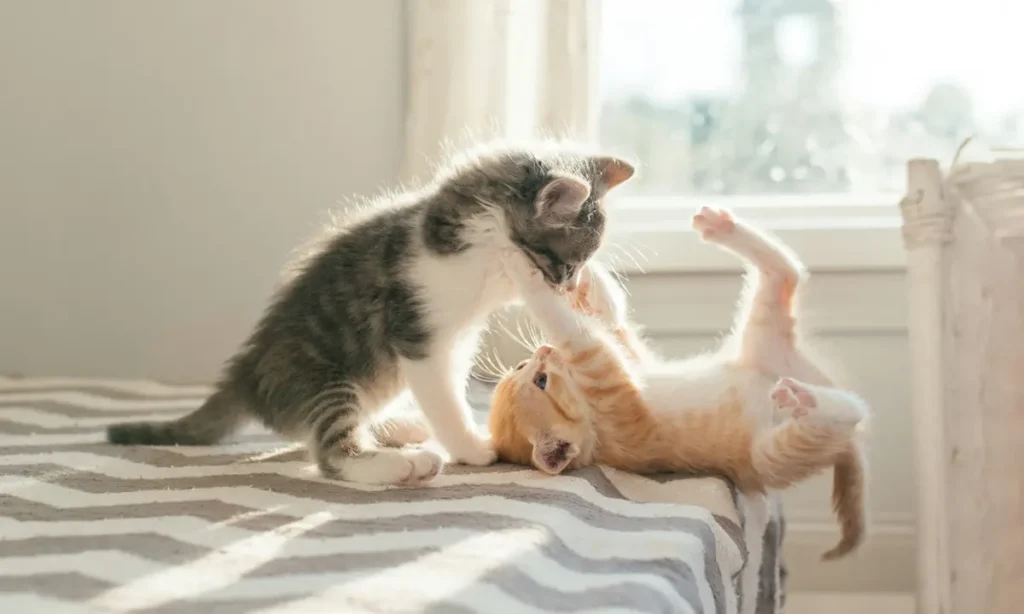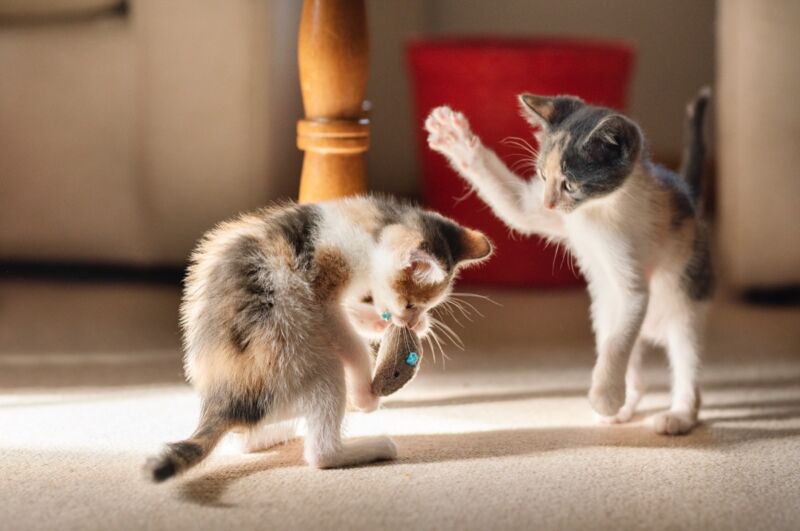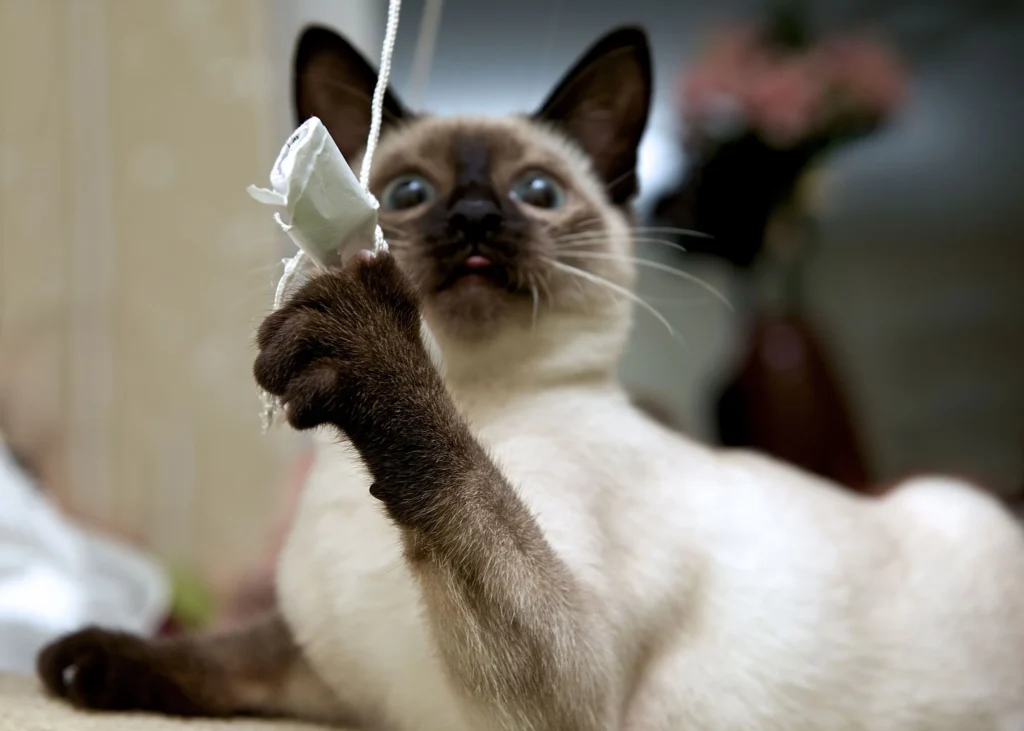Kitten season is upon us! Here are some ideas to help your kitten get started right.
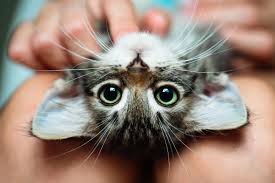
Great Kitten Treats
Chicken baby food, Squeeze cheese, or kitten food (you can feed these off of a popsicle stick or out of a needleless syringe)
Churu
Small pieces of chicken or cheese ( tiny really, the idea is to give them the smallest piece they still perceive as a treat)
Kitten treats, although a lot of time these are pretty big for a quick treat while handling.
Experiment and see what your kitten likes best.
Pair these activities with some yummy treats to create a happy association and you and your cat will benefit from the reduced stress involved in necessary care.
Timing is important! You want to treat WHILE handling because that is the place where you want them to associate a good experience.
Short frequent sessions of practice handling are best.

Basic Handling
Have fun with this one (while still being very gentle!):
Hold your kitten like you don’t know what you are doing. The idea is to get them used to being held just about any way, so if they do encounter someone who doesn’t know, it is still comfortable. The trick here is to hold them in various ways and give treats, but don’t hold them so long they begin to struggle. Just get them used to the idea that they can relax and be handled.
Some ideas:
Have them lie on your lap on their back. (Good for nail clipping later on.)
Hold them up and try to examine different parts, just as a veterinarian might have to some day.
Handle legs, paws, tail, ears, belly, etc.
Lift their lips and look at their teeth.
Teach them to allow you to look in their mouth. You can encourage this with treats.
Extend claws and look between the toes.
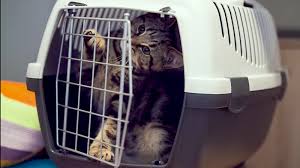
Crate Training and Cars
Keep your carrier open and available as a fun hiding spot.
Use treats or toys to make it a great place to hangout and relax.
You can also feed meals inside the carrier and briefly close the door while eating.
Once kitty is comfortable in the carrier, you can do short walking trips around the house to get him used to the movement.
Then add in going out to the car, sitting in the car…
The idea is small steps and pairing everything with treats, creating that happy association with travel.
Pill popper or syringe
Make a pill out of a treat and use a pill popper to deliver it. Do the same with a liquid treat in a syringe and later they will look forward to getting medicine!
Nail trimming
Start with gently handling paws and extending claws. It can help if they learn to be comfortable lying on their back on your lap. (See above)
Gently touch each nail with the clippers working up to clipping one nail at a time while pairing each clip with a treat. If the sound of the clip seems scary to your cat, try sitting quietly with your kitten and giving lots of treats while clipping a dried piece of spaghetti with the clippers.
Veterinary skills
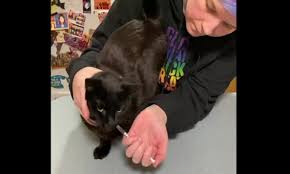
Ask your veterinarian if you can do some friendly visits where you just stop on a few times for yummy treats. This can help them to get used to the smells, sounds, and sights of the vet’s office so it is not a scary experience later on. This is why we have a kitten kindergarten class in the veterinary setting.
Use a needless syringe to do mock vaccinations. Gently hold up a portion of the skin and press the syringe there, again while pairing with treats.
Get them standing on a small scale enjoying treats.
Stand on a table comfortably. Remember here to use a towel or blanket so the table is comfortable and not slippery.
Practice with a stethoscope, otoscope, etc. All while enjoying those great treats.
Other people and animals

Have friends over and encourage them to feed treats and play with your kitten.
If you have access to a calm and friendly dog, introduce them to your kitten. Starting on opposite sides of a door, to get used to the smell of each other, then through a baby gate. If there are no big reactions on the part of either animal, be cautious and keep the dog on a leash while they are allowed to interact.
This can be done with other animals too. If you like to keep small animals, introducing your kitten to a rabbit, rat, or bird will help keep everyone safe later on. ALthough it is never a good idea to leave cats unattended with “prey” animals, they can act on instinct and cause injury even when carefully introduced.
Harness Training
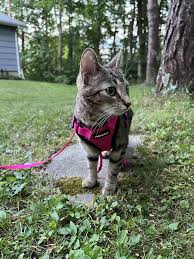
This is a great idea to extend the world safely for indoor kittens.
You can use treats as a lure to get your kitten to put her own head through the harness and accept the harness being clipped.
Have some short play sessions with just the harness on and let her get comfortable with the feel of it.
Later attach a ribbon or string so she can get used to a lighter “leash” dragging behind. Add the leash as she gets more relaxed and then short trips outdoors. Keep it to small short trips to quiet places.
Lastly, always carry your indoor kitty over the door threshold, so she does not learn to walk out on her own. This can help prevent darting out the door.
Positive Play Techniques

Keep your hands out of the mix! It may be cute and fun to wrestle with your hand with a kitten, but that can turn to not so fun when they grow up. It is a good idea to avoid play that involves any part of your body. (Think: Adult cat launching onto your head!)
Use a wand toy, move the toy in an erratic manner across the floor and over cat trees. Lots of fast movements will catch their eye while periods of slow movement will give your cat a chance to stalk and get ready for the pounce. Moving the toy around the room away from them can help. In reality a prey item will rarely move towards a cat.
Experiment with different types of wand toys. Some cats prefer feathers, some strips of material that wiggle like snakes, some like little stuffed toys to grab onto. Some prefer the wands where the toy is at the tip with a bell, some prefer a wand with a string then the toy. There are lots of things out there to tempt your kitty into play.
Lots of kitties love lasers. If you have a cat that goes crazy for these, be sure to toss a treat or a favorite toy into the beam now and then so they have a chance to “catch it”, otherwise these can become frustrating to some.
Try the interactive cat toys that move on their own. Some cats love these, but be cautious with your introduction, some are afraid of the noises or movements. It is also important to not let these take over play altogether and miss the bonding experience with you.
Some cat’s will play fetch or hide and seek under a blanket. One for mine likes when I pull her around the wood floor on a blanket while she attacks the wrinkles. You may even come with others all your own.
And lastly, remember:
Cats can be trained!

Working things like sit and other doggy tricks can add to your kitten’s stimulation.
I highly recommend clicker training with cats because it is positive reinforcement based and will serve to strengthen your bond with your kitten while also giving your cat a means of communication with you.

